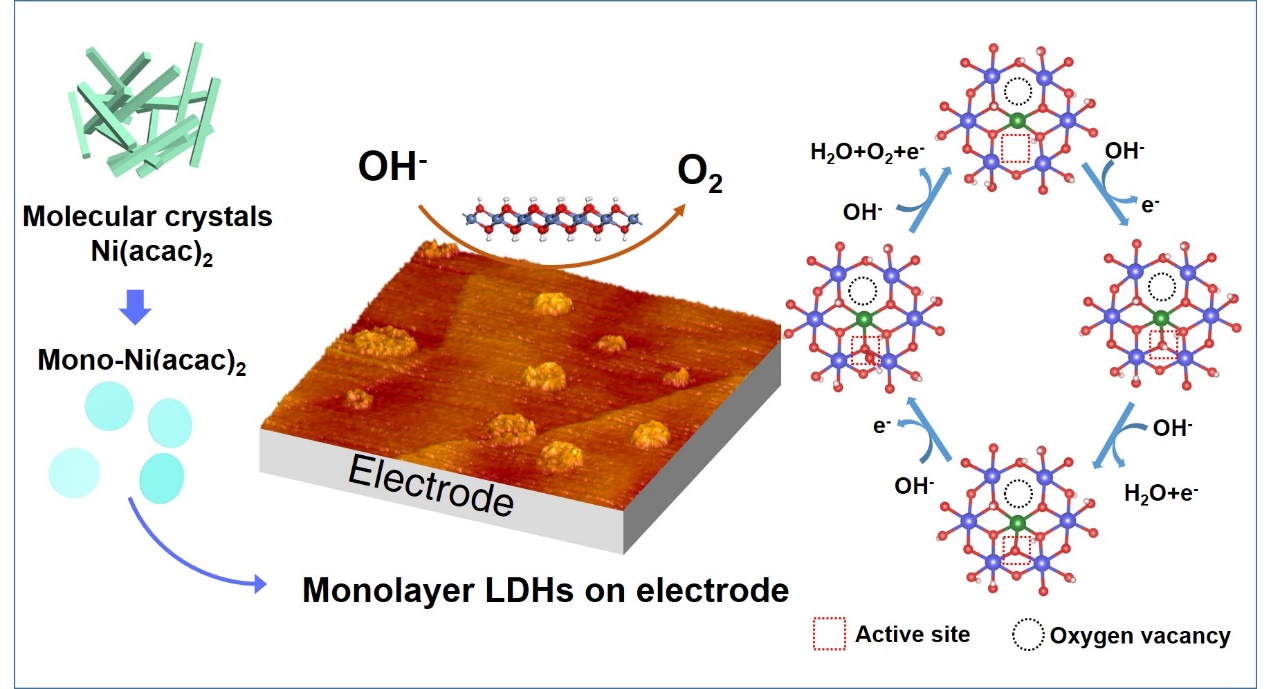Prof. Guo Lin from the School of Chemistry and Prof. Liu Limin from the School of Physics at Beihang University have made great progress in the preparation of monolayer NiCo hydroxides and mechanism of oxygen evolution reaction (OER). Their findings, titled “Valence oscillation and dynamic active sites in monolayer NiCo hydroxides for water oxidation”, were published online in Nature Catalysis on December 6, 2021. Kang Jianxin, a postdoctoral fellow in the School of Chemistry, is the first author of the article, while Qiu Xiaoyi, a postgraduate student from the School of Chemistry, and Hu Qi, a Ph.D. student at Beijing Computational Science Research Center (CSRC), are co-first authors.

As a typical catalyst for oxygen evolution reaction (OER), dehydrogenation of hydroxides materials before producing oxygen and evolution of lattice structures are significant in understanding the catalytic mechanism. The catalytic reaction occurs mainly on the surface of the catalyst. The design and synthesis of monolayer hydroxides enable scientists to explore the function of metal sites and lattice oxygen atoms and its relationship with the performance of eigen electrocatalysis.
Despite the progress that has been made in two-dimensional ultrathin hydroxide materials, there still exists a huge challenge in terms of how to avoid stacking during the preparation of monolayer nanomaterials as well as obtaining the catalytic activity of monolayer materials. In particular, preparing the monolayer hydroxides on the surface of electrodes directly has never be reported.
The research team has established a new method for achieving the experimental goal and revealed the mechanism that lurks behind the OER. The monolayer structure greatly promotes hydrogen and oxygen release processes to produce dynamic active sites for the OER at a lower potential. Lattice doping with cobalt further tunes the electronic structure to reduce the overpotential.
The research not only reports a direct synthesis of monolayer Ni(OH)2 on electrodes as a new approach, but also establishes a critical fundamental understanding of the origin of the active sites in monolayer layered double hydroxides (LDHs) for the OER, providing helpful references to the design of new catalyst.

Link to the article:
https://www.nature.com/articles/s41929-021-00715-w
Reported by Chen Jing
Reviewed by Li Hongjie
Edited by Jia Aiping
Translated by Li Yifan

